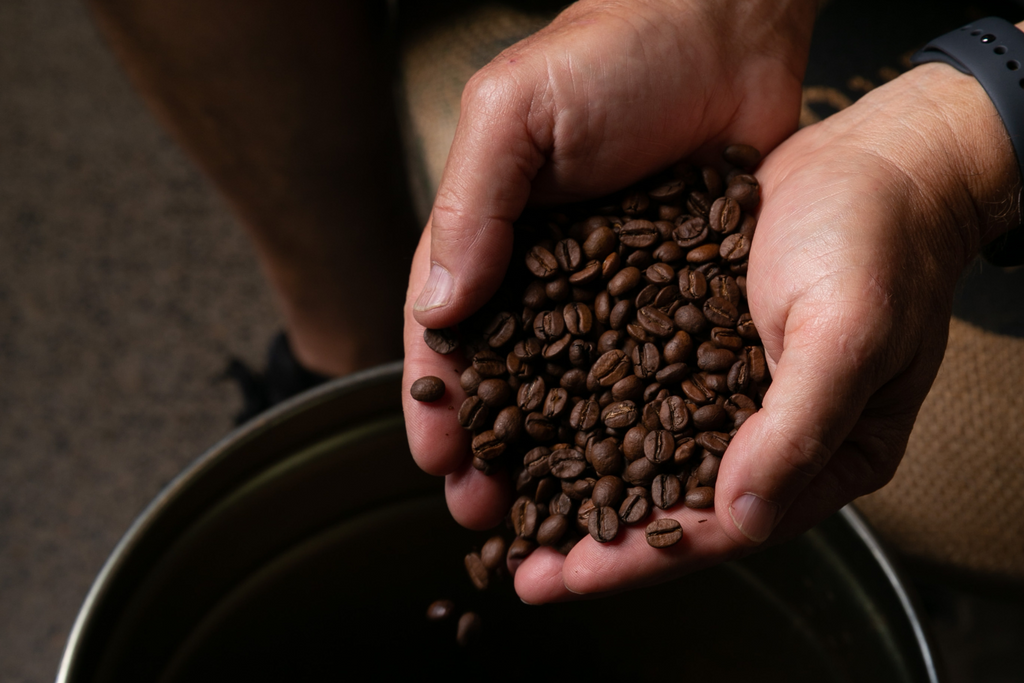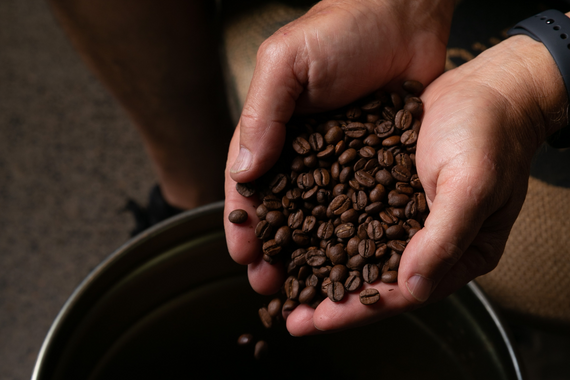At Coffee Brothers, we believe that understanding coffee is a journey – not just from farm to cup, but through time itself. While our roastery uses modern precision, the fundamental act of transforming green beans into aromatic coffee dates back centuries. Join us as we explore the rich and fiery history of coffee roasting, from ancient open flames to today's sophisticated machines.

The Heart of the Process: What Roasting Does
Green coffee beans, (which have very little aroma or flavour) are placed into a hot metal pan and heated over a direct heat source – whether it's an open flame, charcoal, or gas. The roaster (or a machine) ensures constant motion, preventing the beans from burning and promoting even development.
As the beans roast, they undergo incredible transformations:
- Colour Changes: From vibrant green, they shift to yellow, then through various shades of brown.
- Roast Development: Key stages emerge, like the Maillard reaction (the browning phase that creates complex flavours) and the audible "first crack" (a popping sound as moisture escapes). For darker roasts, a "second crack" may follow as oils emerge.
This meticulous process, whether manual or automated, is what unlocks the powerful aromas and delicious flavours we all love.

Ancient Beginnings (13th–15th Century): The First Flames
The story of coffee roasting begins in the ancient lands of Ethiopia and Yemen. It's believed that early coffee enthusiasts, perhaps even Sufi monks, were the first to experiment with roasting the raw beans. They would place them over open fires in simple pans or shallow iron skillets, stirring them manually with spoons. For Sufi monasteries in Yemen, this roasted coffee was initially used as a stimulant to aid in long nights of prayer, marking coffee's early connection to ritual and focus.
Ottoman Empire Innovations (16th–17th Century): The Dawn of Control
As coffee spread, so did the innovation in roasting. The Ottoman Empire played a crucial role in refining the process. Here, more controlled roasting methods emerged with the invention of ingenious metal drums equipped with cranks. These drums were suspended over coals or open flames, allowing for more consistent heat application and easier stirring. This method rapidly spread throughout Turkey, Persia, and the wider Middle East, forming the very foundation of the rich Turkish coffee culture that endures to this day.
Domestic Roasting in Europe (18th–19th Century): A Household Affair
By the 18th and 19th centuries, coffee had made its way to Europe, and a fascinating trend emerged: domestic roasting. European households commonly roasted their own coffee at home. They used hand-cranked roasters, often boxy iron or brass drums, designed to sit conveniently over stovetops or fireplaces. This was a common practice, allowing families to enjoy freshly roasted coffee before the widespread rise of large-scale commercial operations.
Industrial Revolution & Beyond (19th–20th Century): The Rise of Commercial Roasting
The Industrial Revolution brought about a significant shift. In the 1800s, innovators like Jabez Burns introduced mechanized roasters, making commercial-scale roasting possible for the first time. This led to the widespread availability of pre-roasted coffee by the early 20th century, with brands like Folgers and Maxwell House becoming household names.
However, despite these advancements, traditional roasting methods never truly disappeared. They continue to thrive in artisan, farm-based, or small-batch settings around the world, preserving a direct connection to coffee's heritage.

Why This Traditional Method Still Matters Today?
Even with modern technology, the spirit of traditional roasting remains vital, and these methods still hold significant value:
- Hands-on Control: They offer unparalleled direct control over roast levels, allowing for highly nuanced adjustments.
- Deeper Connection: Roasters develop an intimate understanding and connection to the beans and the process.
- Artisan Preference: Many coffee-growing regions and artisan circles still prefer these methods for their unique results.
- Cultural Heritage: They are crucial for preserving cultural heritage, especially in Africa, the Middle East, and parts of Asia and South America, where coffee has deep historical roots.
At Coffee Brothers, we honour this rich history. Our state-of-the-art roastery combines modern precision with the timeless principles of careful observation and dedication to the bean, ensuring every cup you brew carries the legacy of coffee's incredible journey.
➡️ Explore our range of freshly roasted coffee and taste the history!




Leave a comment